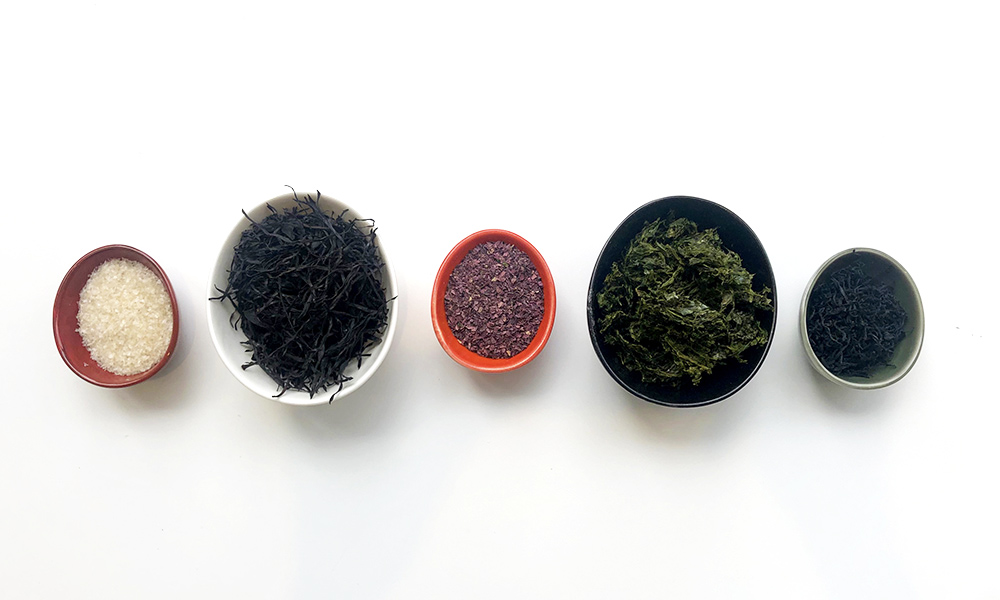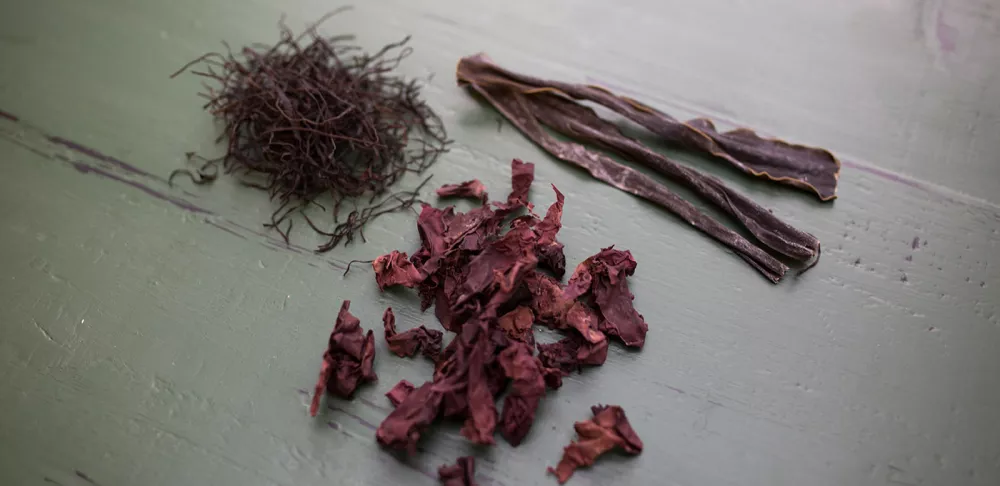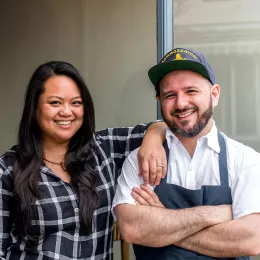You’ve likely seen seaweed snacks in lines at the grocery store, and you’ve certainly seen seaweed wrapped around your favorite sushi or hand roll. But did you know that there are many types of seaweed? ICE Director of Nutrition Celine Beitchman says that seaweeds have been consumed since the dawn of time in one way or another and across cultures worldwide.
“We tend to associate sea vegetables with Asian foodways, but nearly every coastal community consumes them,” she says. “In the U.S., the most popular is probably the most neutral tasting. There’s no end to how you can work with these amazing foods. They can be the star of a dish, provide background notes, or add crunch, color and style to a plate.”
Health-Supportive Culinary Arts Chef-Instructor Olivia Roszkowski says seaweed is earning street cred among the environmentally conscious for good reason. Kelp harvests are rising across America in places like Maine, Alaska, Connecticut, Rhode Island and more.
“Seaweed’s great for aquaculture and the edible kinds, known as sea vegetables, are richer in minerals than land vegetables. They contain a high concentration of amino acids, are a natural dietary source of iodine and are rich in complex carbohydrates that stabilize blood sugar,” Chef Olivia says. “Sea vegetables can also be great eco-friendly alternatives when craving fish in things like chickpea "tuna" salad, anchovy-free Caesar and black olive tapenade.”
The first rule of adding seaweed to your cooking is perhaps the most foolhardy but it is the most crucial: Don’t eat what you see on the shoreline.
“Edible seaweeds that are safe for human consumption typically come from deep or very cold water where the surf is high and contaminants rare. The fact that seaweeds can filter their environment means they are sponges for what they are soaking (e.g living) in,” Chef Celine says.
Seaweeds are available at most quality health food stores, including Whole Foods, and from online retailers, such as Thrive Market and Maine Coast Sea Vegetables.
Next, keep in mind that less is more. Seaweeds (of which there are many kinds, listed below) are vegetables of the sea. They all have different flavors and uses. Chef Olivia says to start by combining small amounts of seaweeds with your preferred produce and letting the seaweeds shine in the background.
“Keep it simple like placing a piece of kombu in your next pot of beans or rehydrate, chop and throw some into your favorite stir fry,” she says. “My best advice is to pair it with an acid to cut through the rich, briny flavor.”
There’s so much you can do with seaweed, from gelatin substitutes to smoothie toppers and more. Here are just some of the ways you can get started.

Agar: the plant-based gelatin wonder that can be substituted to make “Jell-o,” vanilla pastry cream, vegan chocolate pudding, mushroom pate, cauliflower terrine, frosting, etc. Make sure to dissolve in boiling liquid before using. Keep in mind that the powder form is approximately three times as dense as the flakes.
Arame: a good starter seaweed that is moderately priced and widely available in its dried form. The taste is stronger than its more mild counterpart, hiziki. Soak, rinse and drain before using. Sautè with other vegetables like carrots and onions to make kinpira or stir fry or with kale, toasted sesame seeds and garlic for a quick side dish.
Dulse: great crisped in oil and topped on a sandwich as a bacon substitute, sprinkled in a cherry-pistachio granola or in a mock chickpea "tuna" salad. It’s too strong to eat on its own for most individuals but packs a great salty punch when sprinkled onto a dish.
Hiziki: best soaked, rinsed and sautéed with onions, garlic and a dash of shoyu into a staple dish from the Health-Supportive Culinary Arts curriculum called hiziki “caviar.” Hiziki has a mild taste, is highly prized and can be eaten on its own but can be expensive.
Kombu: Japanese chemists first isolated the flavor umami from this sea kelp's glutamic acid. Kombu is a great addition to stocks, broths, beans or grains for digestibility, flavor and minerals. It’s strong on its own, so stick to one piece per pot as to not overpower.
Nori: great to make sushi, or try adding it to a plant-based Caesar dressing or olive tapenade in place of anchovies; toast and crumble over croutons, popcorn or rice; toast and crush with sesame seeds for fresh gomasio (a Japanese condiment usually made with sesame seeds and salt).
Wakame: a good introduction to seaweed, as it comes dried and can be reconstituted in water. It turns bright green and does great in cucumber salad or miso soup.
Explore more plant-based cooking in ICE's Plant-Based Culinary Arts program.




